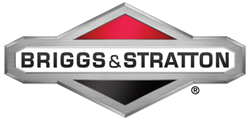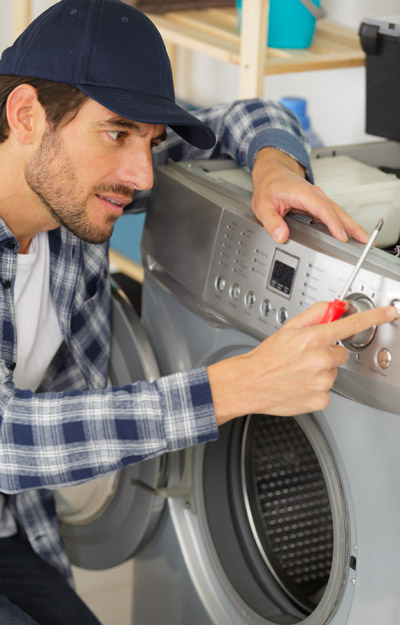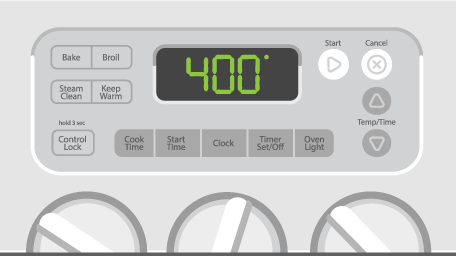Make sure you haven't got the discount earlier.

How to Troubleshoot Oven Heating Issues
Having an oven that is consistently reaching the desired temperature is essential for success in the kitchen. If it's too hot or too cold, it can make cooking extremely difficult, and leave you with undercooked or overcooked food, neither of which is good! Before you throw your oven to the curb or call your local technician, there are a few things you can check on, and small and inexpensive parts that can be easily replaced to get it back up and running again. We will walk you through which components may be causing this issue, where they are located, and how to test them.

Check for Power to the Range
The first step of this diagnosis is to determine whether you have the proper power going to the range. Most applications use either 208 volts ac or 240 volts ac to power the range. The easiest way to check if you have the proper power is to use the surface burners. Simply turn them on to a high setting, verify that they heat up properly, and if they do, you can assume the power is correct. If the surface burners don’t appear to be working properly, go back to your electrical panel and check the fuses or the breaker to see if the problem lies there. If you have determined that you have proper power going to the range, the next step will be to check the individual elements in the oven.
Check the Oven Elements
All ranges use both the bake and broil elements in any cooking function, so the easiest way to test them is to simply pick a broil function, set it to broil, open the oven door, and then feel for any heat coming from that broil element. Use caution because it is fairly close to the front. To test the bake element, we’ll set it to a bake function. Again, check for heat coming from the element. If it is warming up, you’ll know that the element is working fine as well. On some ranges the bake element is hidden. Again, you would still select a bake function, and although it takes a little bit longer, you should feel some heat coming from the bottom of that oven pan. So, if our visual inspection of the elements didn’t indicate that they were defective, but they still don’t heat, our next step is to do a continuity test on them.

Run a Continuity Test on the Elements
Start by removing the back panel and make sure that the power to the range is turned off. We also suggest that you take at least one of the wire terminals off of the element. Inspect those terminals to make sure that they are in good condition. Using a multimeter set to a resistance scale, check for continuity on the broil element. Typically, you’ll see somewhere between 50 and 15 ohms resistance. If after testing, you have determined that the element is working properly, do the same procedure on the bake element to verify that it is working as well.

Check the Oven Thermostat Control
On manual control ranges, if both the elements have passed their test but you still don’t have the proper temperature, you will want to check the oven thermostat control next. The control itself has a switch body that is in the console and it has a capillary tube with a temperature sensing bulb. That temperature sensing bulb sits along the wall inside of the oven either on a side wall or on the ceiling. It is used to monitor the temperature in the oven, and it sends that information to the control. You will need to inspect the temperature sensing bulb to verify that it's not damaged or that the capillary tube is not damaged. You will also want to check to make sure it is mounted firmly in the clips that are holding it in place. If that appears normal, you may have a control that is out of calibration. Typically, you can adjust these plus or minus 25 to 50 degrees Fahrenheit. To do this, remove the control knob and then use a very small blade screwdriver by putting it through the center and adjusting it one way or the other to compensate for those temperatures. If that does not resolve your issue, you can assume that the control is bad, and you’ll need to replace it.

Check the Thermostat for Continuity
The first step will be to turn the control to a preset temperature of around 300 degrees or so. On the backside of that control, you’ll need to determine which of the contacts you’ll need to test for continuity, based on your model and the wiring diagram that comes with your oven. On our example oven in the video, we determined we do have continuity in the bake circuit, so next we checked the broil circuit. Again, turn the control to a broil function, and using your multimeter, test for continuity with the proper terminals, and verify that the function works properly.

Check the Temp Sensor
On electric control ranges, they use a device called a temp sensor to regulate the temperature in the oven. If your tests for the bake and broil elements have passed, it is safe to suspect that the problem might be with the temp sensor. It is located on the back wall of the oven up close to the top and either on the left or right rear corner.
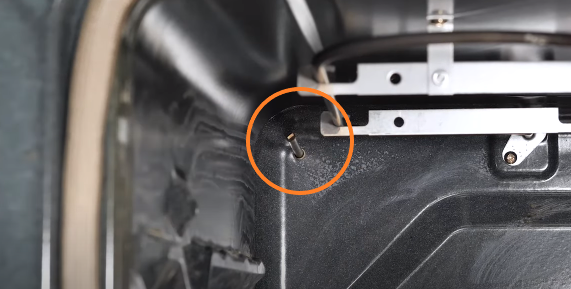
Test the Temp Sensor
Most electronic control ranges will display a fault code, if you have a defective temp sensor, however that’s not always the case. You can test this component individually. They have a specific resistance related to the specific temperature of that temp sensor. Using a multimeter, you can test that resistance at room temperature and verify that it is working properly. To test the temp sensor, you will need to remove the back panel from the range to locate it and the harness connector. You’ll need to separate the harness connector. if your metal leads are too large to fit in the front side of that, you can flip it over and perhaps get in from the backside. If not, you can follow that harness all the way back to the control board. You can then disconnect that connector from the control board and do your measurements from that side. If you choose that method, make sure that you reconnect the small harness to your temperature to keep that wiring in circuit. Typically, the resistance of that temp sensor at room temperature is about 1050 to 1100 ohms. Pick the appropriate scale on your multimeter. If it is significantly different from those numbers at room temperature, you may assume that the temp sensor is defective, and giving a false reading to the electronic control.

Check the Control Board and Adjust Settings
If the temperature sensor has checked out as okay, you may still have an issue that is related to the control itself. Most manufacturers have made a provision that you can offset the temperature of the oven by plus or minus 35 degrees Fahrenheit. Check your user guide to verify how to do that. It is simply a keypad function that you can either trick that oven into thinking it is warmer than it is or cooler than it is to compensate for it. To verify that you don’t have a temperature offset programmed into the electric range control, follow the manufacturer's instructions. For the model we used in the video example, it asks us to hold the bake function for about 5 seconds, and that will display any current offset that has been programmed in.
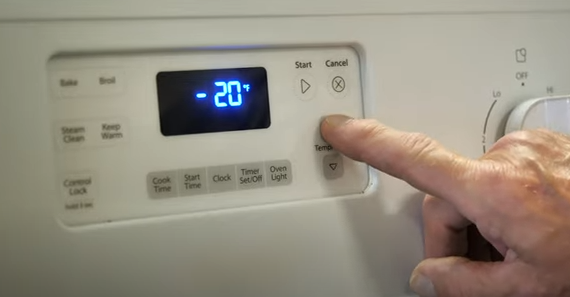
We hope that by following these steps, we’ve helped you diagnose your own oven heating issues. Replacing these parts yourself will not only allow you to repair your existing oven, but it can save you a lot of money in repairs and replacements. For more troubleshooting and repair advice check out our YouTube Channel.








